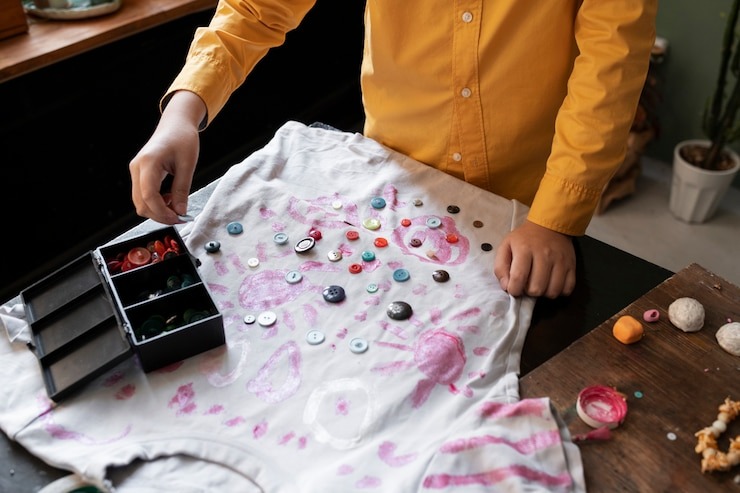If you are running a clothing business then you must answer daily to a lot of questions. The most common of all is the effective technique you require for customizing your product. Therefore, you need to know the procedure for custom T-shirt screen printing.
The extreme detailing that goes into designing the T-shirts is worth waiting for. Before you call your friends or pay for the procedure, let us be your guide. We will explore the types and things you need to do.
Therefore, read the post to know more!
What is T-shirt Screen Printing?
You can transfer a stencil design onto a t-shirt’s surface using a screen and ink. Fabric and paper are the most common materials you can use for this process. Designers also use light to imprint the design in a better way.
After that, they use a squee-gee-like device to spread the ink over the design.
While this process is commonly known as silk screening, the actual printing process of your T-shirt is always similar. However, the stencil used varies.
There are many different techniques of printing:
● Direct To Film Printing
● Vinyl Heat Printing
● DTG or Direct-To-Garment
● Dye Sublimation Printing, etc.
Normally, you can make the designs using the screen-printing technique in just one shade. So, when you try to create multicolored items, make sure the colors become visible in individual layers.
Process of T-shirt Screen Printing
You must know the fact that there are different methods of designing clothes. Customers are always fans of brand quality. If you can offer them that, they are all yours. Price and quality are essential criteria of a commodity.
They are impacted by the technique used to manufacture the apparel. The same is true for T-shirt screen printing. Let us now explore how it is done below.
● Creation of the Design
You need a strong layout of the product you want to create. T-shirt printers will take up your design to create your final product. You can make a printout on a transparent acetate machine and use it later to make the stencil.
● Preparing the Screen
Your printer will prefer a mesh screen to match the difficult complexity of the design. The mesh screen is coated with a part of light-reaction which changes its color under bright light.
● Expose the Emulsion
You must put your acetate sheet on the emulsion screen of T-shirt printers. It will let the whole material be exposed to a very bright light. The light makes the emulsion hard so your parts remain covered in liquid form.
If the final design includes more than one color, you can make a separate room for each layer of ink. You must use your skill to design each stencil and ensure a seamless design.
● Wash off the Stencil
Once you are done exposing your screen, the area will turn hard from the design. You can easily clean the unhardened emulsion. As a result, this leaves a clear imprint on your T-shirt on the screen to pass through.
Once the screen is dried, you can make any necessary touch-ups or corrections. This will help to bring an accurate design and make the stencil ready to use.
● Proceed for the Clothing to Print
You can place the screen on the printing press. Use the T-shirt screen printing to lay down on the printing board. There are different presses available including manual and automatic styles.
But most automatic printers can allow several other screens to work altogether. For multicolored prints, you can use the printer to separate the color from different layers.
● Pressing of the Ink Through the Screen
You can place the screen down on the printing board and add the ink to the top end. This helps to push the ink through the available areas and engrave the design.
If you want to create multiple items through the T-shirt screen printing, raise it and place the garment. Repeat the process.
Once you print all the items and are done with the stencil. Remove the emulsion using a special washing fluid so that you can use the stencil again.
● Your Product is Done
During the process of T-shirt screen printing, the manufacturer passes your finished product through a dryer to create a smooth finish. You can wash the final output to remove any leftovers before passing it to the next owner.
Why You Need T-shirt Screen Printing?
Most t-shirt printers choose this type of technique for the following reasons:
● T-shirt screen printing produces vivid colors even on dark fabric materials. As a result, it gives your print a premium quality.
● If you are satisfied with a certain design, it allows you to change it multiple times.
● They can create custom designs and cater to specific audience tastes.
Wrap Up
Therefore, choose the best T-shirt screen printing for your product and gift your consumer a fine premium quality. All the best!
Visit our home-page for more information





